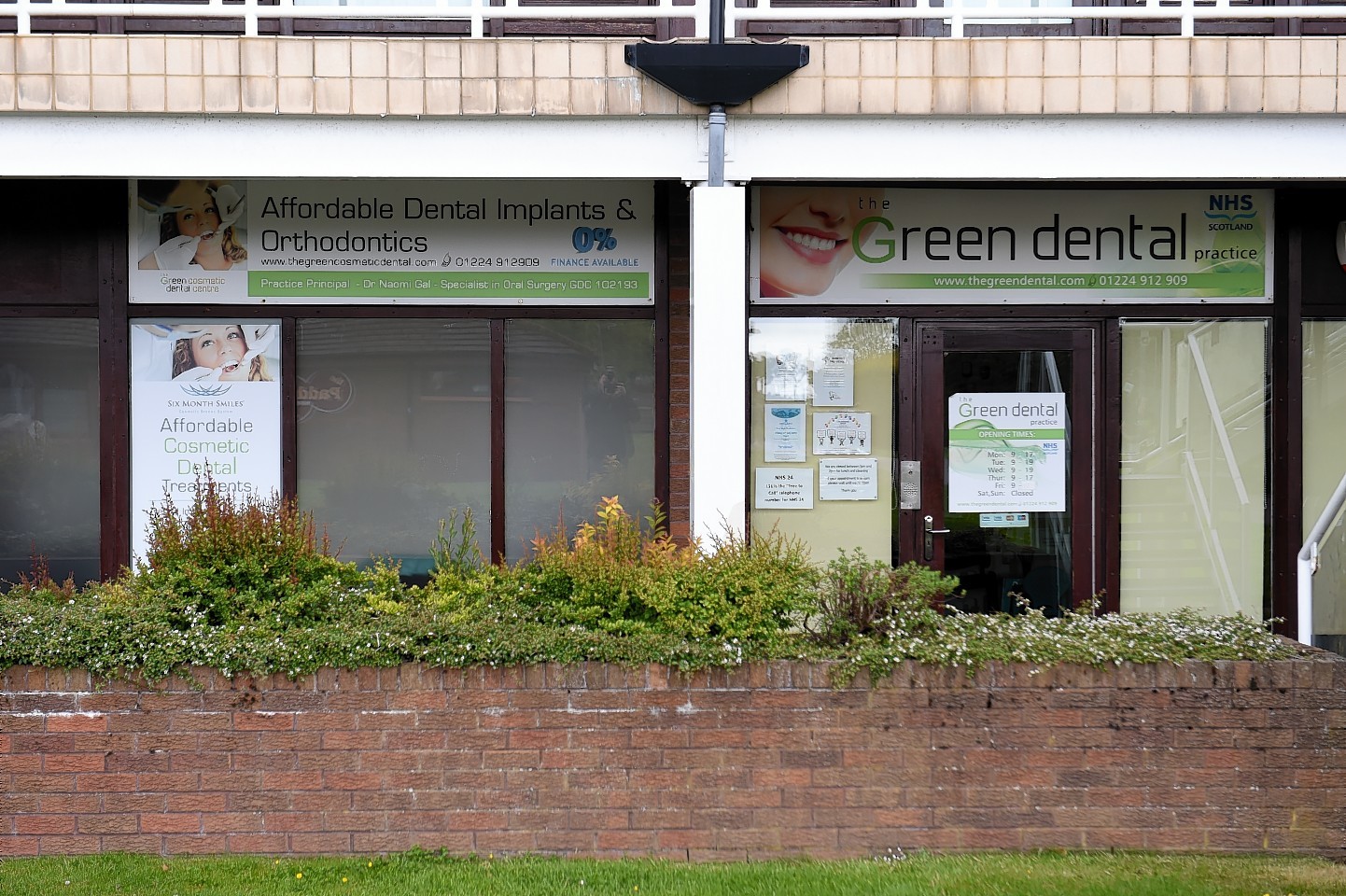A north-east dental practice is under investigation amid claims it breached the terms of a government grant worth thousands of pounds.
Dr Noemi Gal, who runs The Green Dental Practice, in Portlethen, received £125,000 in 2011 as part of the Scottish Dental Access Initiative (SDAI).
The fund was set up to attract practices to the north east given an ongoing shortage of dentists in the area.
Dr Gal is facing allegations that she failed to notify NHS Grampian that the practice had started trading as a limited company – against the terms of the grant.
The practice is not on a list of eight dental surgeries in the north east which have notified the health board they have started trading in this way.
However, records from Companies House state that the practice was listed as The Green Dental Scotland Ltd from October 11 2013.
Under the SDAI terms, a grant holder must “immediately advise” the health board, if they establish a limited company.
The authorities must be updated on any change in status so that the health board knows who has responsibility for the grant.
NHS Grampian has confirmed The Green – along with four other practices in the north east – is now being investigated for “actual or potential non-compliance” with the terms of the grant.
The health board has requested access to the full financial records of the dental practice.
NHS Grampian would not be drawn on the specifics of Dr Gal’s SDAI grant.
A spokeswoman said: “The Scottish Dental Access Initiative (SDAI) was introduced by the Scottish Government to improve access to General Dental Services (GDS). It is an important part of wider initiatives to improve dental services across Grampian and has contributed to improving access to GDS.
“The SDAI Grant scheme is estimated to have led to about 115,000 patients being registered with a NHS dentist in Grampian.
“Seven out of ten people in Grampian are now registered with a NHS dentist and registration has been consistently on the rise since 2007. This is a significant achievement given the historical challenges we faced and given the higher than average number of residents who are treated privately.
“NHS Grampian is completing a comprehensive review of the monitoring processes for SDAI grants. This will be both prospective and retrospective resulting in a more robust process that will ensure better compliance with the grant conditions.”
If a grant holder has breached any of the SDAI conditions within the seven years, they could be required to pay the money back in full.
Dr Gal could not be reached for comment last night.
How do the grants work?
Upon receipt of the SDAI, a grant holder must comply with the terms for seven years.
Initially given 80% of the funding, the grant holder must register 1,500 new NHS patients per surgery within 12 months in order to get the rest of the cash.
However, if this target is not met, the health board does have the power to grant an extension.
Dr Gal used the SDAI grant to fund two surgeries and had a target of 3,000 new registrations.
However, she had not reached this target within the first 12 months and was granted an extension by the NHS in 2012 – the target was met by December 2013.
SDAI practices are also required to make sure a minimum 80% of their annual income comes from NHS patients – each practice is required to submit an accountant’s certificate annually as proof.
The SDAI was first introduced in 1997 amid a crisis in access to dental treatment for NHS patients.
Initially the scheme was administered by the Scottish Government, but in 2007, this responsibility was passed to individual NHS health boards.
From April 1 that year, health boards were required to ensure that recipients met the SDAI criteria at the time of application, and also throughout the duration of the seven years.
This means health boards have the power to examine dentists’ full financial records if they suspect the grant terms are being breached.
